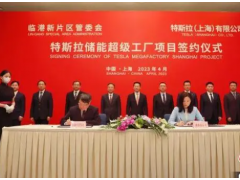The third round of negotiations on China-ASEAN Free Trade Area 3.0 was recently held in Kunming, Yunnan. Since China and ASEAN signed the "Comprehensive Economic Cooperation framework Agreement" in 2002 to start the construction of the free trade area, the construction of the China-ASEAN free trade area has been continuously upgraded, and the degree of market opening has gradually expanded.
From version 1.0 to version 3.0 of the Free Trade Zone, from building "hard connectivity" to strengthening "soft connectivity", and expanding from traditional areas to digital and green emerging areas, the multi-field cooperation between China and ASEAN is being further deepened and upgraded.
Free trade zone upgrade
"Southeast Asian countries welcome the upgrade of the China-ASEAN Free Trade Area, because this is a free trade agreement that really has an impact, and its upgrade will have significant effects." Thailand's "Bangkok Post" reported.
The China-ASEAN Free Trade Area is the first and largest free trade area negotiated by China with foreign countries. It was implemented in 2002 and fully completed in 2010. Under the promotion of various preferential policies in the free trade area, from 2002 to 2018, the two-way trade between China and ASEAN increased by more than 10 times, and the two-way investment increased by nearly 5 times.
In 2019, the China-ASEAN Free Trade Area will be upgraded to version 2.0, and the two sides will further open up their markets.
In November 2022, China and ASEAN launched the China-ASEAN Free Trade Area 3.0 upgrade negotiations, and two rounds of consultations will be held in February and April 2023. The negotiations cover trade in goods, investment, digital economy and green economy.
Foreign media focused on China-ASEAN Free Trade Area 3.0 negotiations progressing in an orderly manner, focusing on the negotiations to draw a blueprint for deepening cooperation between the two sides.
According to the Vietnam News Agency, the third round of negotiations on the China-ASEAN Free Trade Area 3.0 aims to ensure that the ASEAN-China Free Trade Area will help to further deepen and expand bilateral economic relations and the economic recovery of the region in the post-epidemic era. Positive signal—Both ASEAN and China have committed to making the free trade area more suitable for multinational enterprise cooperation, meeting the needs of future development, and preparing for various global challenges.
Oramon Suthavithon, director of the Trade Negotiation Department of the Ministry of Commerce of Thailand, said that the construction of China-ASEAN Free Trade Area 3.0 will promote the expansion of production, strengthen regional connectivity, and deepen cooperation in industrial chains, supply chains, and value chains. Coping with the complicated world economic situation.
At the same time, China and ASEAN are closely cooperating under multilateral cooperation mechanisms such as the Regional Comprehensive Economic Partnership Agreement (RCEP), ASEAN, China, Japan and South Korea (10+3), sharing opportunities for regional economic integration, and attracting the attention of foreign media.
According to the Latin American News Agency, on June 2 this year, the Philippine government completed the RCEP approval process, marking the full entry into force of RCEP in all partner countries. The pact seeks to boost trade and cooperation by gradually reducing tariffs on goods, simplifying the red tape of doing business between member countries. Analysts believe that it will become a catalyst for the global recovery after the new crown epidemic and help the region move towards the center of the global economy.
The Macroeconomic Research Office of ASEAN, China, Japan and South Korea recently released a report stating that in 2023, the "10+3" region will achieve a relatively rapid GDP growth of 4.6%. The return of Chinese tourists will drive the recovery of ASEAN tourism, especially that of Cambodia and Thailand will benefit. "10+3" needs more than ever to continue to be committed to free trade and regional economic integration, strengthen cooperation in various fields such as climate change, and make full use of the "10+3" regional economic growth opportunities.
Deep cooperation in multiple fields
This year marks the 20th anniversary of the establishment of China-ASEAN strategic partnership and the 10th anniversary of the proposal to build a closer China-ASEAN community with a shared future. Foreign media have paid attention to it. In recent years, the deepened cooperation between China and ASEAN in many fields has yielded fruitful results, showing the vitality of sustainable development.
According to an article published on the Bloomberg website, China's emphasis on afforestation and sustainable use of nature has achieved remarkable results, and this model is spreading to Southeast Asia. Eric Solheim, former executive director of the United Nations Environment Programme, said that joint realization of green transformation is an important part of China-ASEAN cooperation. The solid economic ties and friendly relations between China and ASEAN have laid a solid foundation for the two sides to cooperate in the field of ecological protection. China has announced that it will stop investing in new coal-fired power plants overseas, which provides a major opportunity for ASEAN countries to obtain large-scale investment in solar energy, wind energy and green hydrogen energy. The concept of "ecological civilization" put forward by China provides a unique development concept for reference for other countries.




